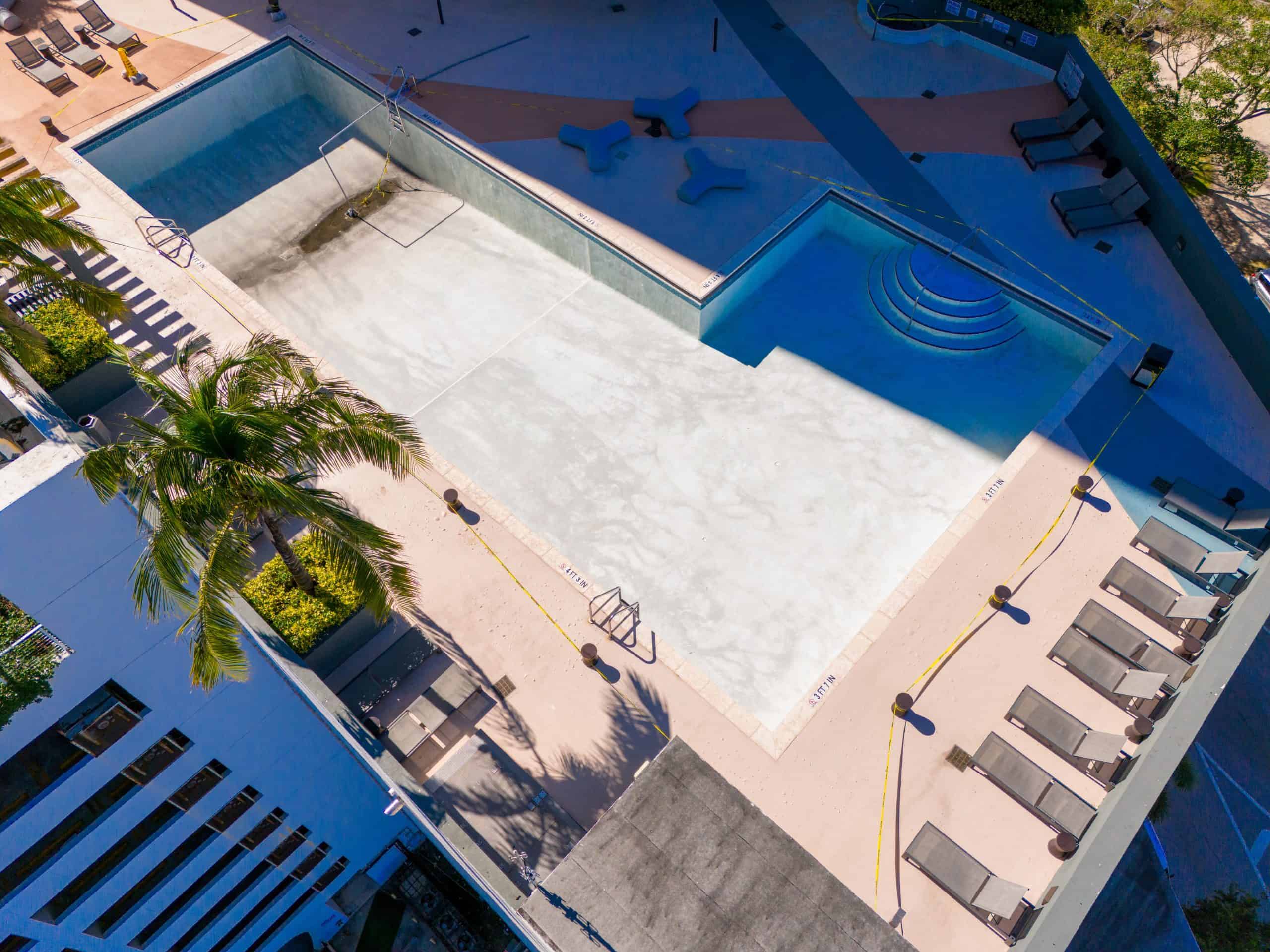Transform your rough, stained pool into a beautiful swimming oasis with professional resurfacing that protects your investment.


Your pool should be a place of relaxation, not frustration. When surfaces become rough, stained, or damaged, every swim becomes uncomfortable and your property value suffers.
Professional pool resurfacing transforms your aging pool into a smooth, beautiful centerpiece that enhances your entire backyard. You’ll enjoy safe swimming without worrying about cuts or snagged swimwear, while reducing ongoing maintenance costs and chemical needs.
The right resurfacing material extends your pool’s lifespan by decades, giving you years of worry-free enjoyment and protecting one of your home’s most significant investments.
DCPP Services has been serving Broward County pool owners with reliable, professional pool maintenance and resurfacing services. As a locally owned company, we understand the unique challenges Florida pools face from intense sun, frequent storms, and year-round use.
Our team holds CPO (Certified Pool/Spa Operator) certification, ensuring every resurfacing project meets industry-leading standards. From initial assessment to final inspection, we provide upfront pricing and flexible scheduling that works around your life.
What sets DCPP Services apart is our commitment to clear communication and guaranteed satisfaction, making pool resurfacing straightforward instead of stressful.

Pool resurfacing starts with a thorough assessment of your current surface condition and discussion of your goals and budget. We evaluate factors like existing damage, pool usage patterns, and aesthetic preferences to recommend the best surface material.
Surface preparation involves draining the pool and removing the old finish through careful sandblasting or chipping. This step is critical because proper preparation ensures the new surface bonds correctly and lasts for decades.
The new surface application follows manufacturer specifications precisely, whether you choose plaster, aggregate, or tile finishes. After curing and final inspection, your pool is refilled and balanced, ready for years of beautiful, safe swimming.

Ready to get started?
Pool resurfacing in Playland Village requires materials that withstand Florida’s demanding climate. Standard plaster offers affordability and smooth texture, typically lasting 7-10 years with proper maintenance. Aggregate finishes provide enhanced durability and slip resistance, ideal for families with active swimmers.
Premium options like pebble surfaces and tile offer maximum longevity and aesthetic appeal, often lasting 15-20 years. These materials resist staining and algae growth better than traditional plaster, reducing chemical costs and maintenance time.
We help you select the right surface based on your budget, usage patterns, and long-term goals. We source quality materials from trusted manufacturers and provide detailed explanations of each option’s benefits and maintenance requirements.

Ready for a Pool You'll Love?
Contact us today for a free quote!
DCP Pool Services
Company
Useful Links